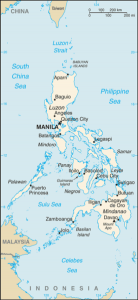With the reports of an additional 38 typhoid cases today, the outbreak at the Cebu town of Borbon has topped 80, according to the Regional Epidemiology and Surveillance Unit (RESU) in Central Visayas.
The outbreak has affected three villages in the town: Lugo, Clavera, and Cahel. Health officials have advised residents not to use water from faucets and deep wells without boiling it. Water from the reservoir in Barangay Lugo was found to not have been chlorinated properly.

RESU-7 chief Rennan Cimafranca said there is no chlorine in the water necessary to make the water clean. I recommend to the Local Governmental Unit (LGU) to invest in a motorized chlorinator instead of having it done manually.”
Roland Bucog, municipal administrator of Borbon, said they used to have a motorized chlorinator, but it was destroyed so they resorted to manual chlorination.
Typhoid fever is a potentially life-threatening illness caused by the bacterium Salmonella typhi. Salmonella typhi lives only in humans. Persons with typhoid fever carry the bacteria in their bloodstream and intestinal tract. In addition, a small number of persons, called carriers, recover from typhoid fever but continue to carry the bacteria. Both ill persons and carriers shed S.typhi in their feces.
You can get typhoid fever if you eat food or drink beverages that have been handled by a person who is shedding S. typhi or if sewage contaminated with S. typhi bacteria gets into the water you use for drinking or washing food. Therefore, typhoid fever is more common in areas of the world where handwashing is less frequent and water is likely to be contaminated with sewage.
Typhoid fever can be successfully treated with appropriate antibiotics, and persons given antibioticsusually begin to feel better within 2 to 3 days.
Learn more about typhoid fever in this educational video
For more infectious disease news and information, visit and “like” the Infectious Disease News Facebook page

